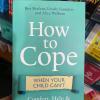Race has been a controversial topic for years. The journey of eliminating discrimination and prejudice in society is an on-going journey to equality. We have gotten closer compared to the past decades but are still nowhere near close enough. In the novel, To Kill a Mockingbird by Harper lee, it shows the issues of race in their town of Maycomb set in the 1930’s. The town is divided and there are few openminded people. One of the few open-minded includes Atticus Finch who is the local lawyer who takes on all the controversial cases. He has two children, a daughter and a son. The daughters name is Scout and the son’s is Jem. Atticus throughout the book teaches his children life lessons through experience. He teaches them about the prejudice against the African American residents of the town and teaches them how discrimination is wrong. The representation of discrimination and prejudice in the novel can be connected to how it has grown and changed in modern society today.
Before we get into comparing and contrasting the theme of the novel to today’s society, lets break down what the meaning of prejudice actually is. Prejudice is, “an antipathy based on faulty and inflexible generalization directed towards a group as a whole or towards an individual because he is a member of that group. It may be felt or expressed.” (simplypsychology) the same article says that there are 5 stages of prejudice behavior, Anti-locution, Avoidance, Discrimination, Physical attack, and Extermination. Anti-locution is saying verbal discriminations like jokes, gossip, and speeches. Avoidance is just like how it sounds, it is the act of avoiding a person or group you do not like or want to be around. Discrimination is when people from a certain group starts getting excluded in their rights and in behavior. Physical attack is when people angers turn into something physical rather than just mentally having an opinion. Lastly, we have extermination, it is actively excluding people from doing things like being able to sit in a certain area. In To Kill a Mocking bird it shows how the people of Maycomb use these tactics against the colored residents living beside them. They use prejudice against them and anyone against their ways of prejudice like Atticus. He has a strong sense of justice and his morals are strong. Things that they might do or say to him doesn’t seem to affect him. He explains in this quote of how his mind processes all this, “I certainly am. I do my best to love everybody... I'm hard put, sometimes—baby, it's never an insult to be called what somebody thinks is a bad name. It just shows you how poor that person is, it doesn't hurt you." Not everyone is as unaffected by all this judgement like Atticus appears to be. The people of color have been discriminated against their whole life, so it has become a sort of instinct to throw it back. In the book, Calpurnia, the house chef for the Finches, is African American takes Scout and Jem to her all colored church. When they arrive, a woman is standing outside the door and says, “You ain’t got no business bringin’ white chillun here— they got their church, we got our’n. It is our church, ain’t it, Miss Cal?” (Chapter 12) Lula is treating the children the way she’s been treated. A video from Khan Academy actually explains what this loop is and that it is called “self-fulfilling prophecy”. They explain this 3-step process that leads to the cycle of discrimination. It first starts with cognition, then affective, and last behavior. The steps can be described as stereotyping, prejudice, and discrimination. Khan academy explains that if one person expresses a negative thought towards a group or person without knowing them, it can turn into a bunch of un-factual thoughts and they start to resent it. All this information in the whole paragraph breaks down to one key factor, stereotyping. Stereotyping is having a preconceived notion about someone when you don’t know them and prejudice and discrimination in a way are the heighten versions of extreme stereotyping.
Now that the science of what goes through our mind for prejudice, lets reference some real time things that have been happening. Our most recent two presidents have had very different views of race. Our current raining one now, Donald Trump has expressed his dislike for immigrants and his concern of illegal immigration. In an article by the Washington post called “Trump’s racist closing argument”, it talks about a very controversial commercial he released. The article says, “On Halloween, the Trump campaign released a commercial featuring a killing-undocumented immigrant named Luis Bracamontes. It has been compared to the 1988Willie Horton ad. But that is unfair. This is much worse. "Democrats let him into our country," the ad says. "Democrats let him stay." (galegroup) Trump has shown many times that he is racist. He is always gathering the groups he knows will agree with him and are letting unacceptable tendencies spill by which a president shouldn’t endorse. On the other hand, before Trump we had president Obama, the first colored president in the United States. He had done many great things and paved the way for equality in the government. An interview of a researcher from NPR science correspondent named Shankar Vedantam tells us about how studies say that “prejudice against African-American and Hispanics has increased since 2008.” (npr.org) He talks about how people still have racist tendencies even with a African American president. They go through complaints from the people of how people say Obama has been the most racially diverse but hasn’t helped anything at all. Shanker Vedantam says, “One of the hypotheses in some ways that the AP and the researchers were trying to address was, would having a black president, you know, somebody in a position of authority and dignity, would that change racial attitudes in some significant way? Would that change and make people feel more positive towards African-Americans? And I think it's fair to say that what the survey is finding is the answer is no. But the idea that this presidency has been so racially divisive and that's caused these attitudes, I don't think the evidence really supports that. Because again, if you look at these attitudes, they pre-date Obama by a very long period of time. What's fair to say is that Obama doesn't seem to have had much impact on changing those attitudes. But it would be a long stretch to say Obama actually caused those attitudes.” (npr.org) He that just because he is in power doesn’t mean it’s going to change anything because of how people were raised and the stereotypes that they have. This can be compared to in the book with the court scenes and the cases Atticus takes. He knows he is not going win and the judges aren’t going to change his mind, but he stills try’s anyways cause it’s the right thing to do. It says it perfectly in this quote, “There’s something in our world that makes men lose their heads ¬¬– they couldn’t be fair if they tried. In our courts, when it’s a white man’s word against a black man’s, the white man always wins. They’re ugly, but those are the facts of life. […] the one place where a man ought to get a square deal is in a courtroom, be he any color of the rainbow, but people have a way of carrying their resentments right into a jury box.” (Chapter 26)
We have been battling race for many years as shown in To Kill a Mockingbird. We are still struggling with the same battle today. The actions taken in the past have paved a way for a brighter future, but the journey to see the sun is a long one. Prejudice is derived from what we learn and experience in the past and when we are kids. We are taught to act a certain way. So, making a change in the world is challenging to do. It’s hard to teach an old dog new tricks. That doesn’t mean we should give up hope. Things are getting better, slowly but surely. Integrating a more equal and open-minded way of think through our schools and media can help pave a way for change.
















